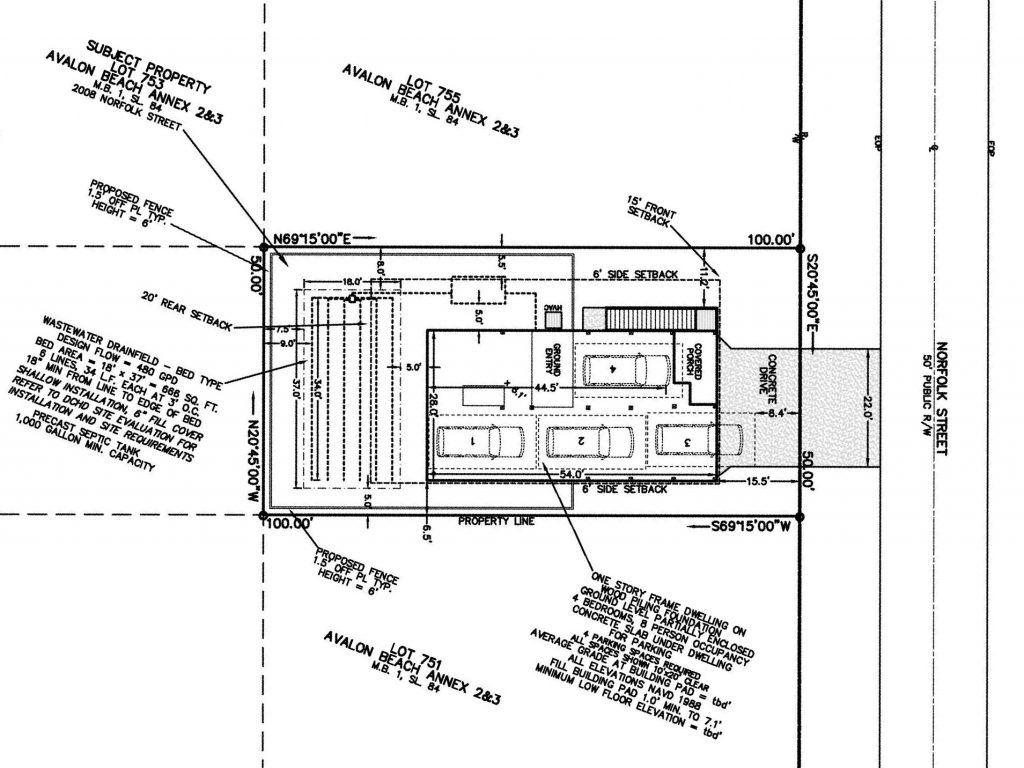Congratulations, you finally found the perfect Outer Banks lot! Now, it’s time for you and your broker to work on terms for the Offer to Purchase and Contract (OTP). One critical component not to be brushed over is the “Due Diligence” period.
Certainly you need to allocate sufficient time to obtain financing, but this time frame is also crucial to properly evaluate the homesite for construction. We recommend allowing 45 days from the contract date to allow for the coordination and completion of the following evaluations:
1. Property Survey – A current survey is necessary to determine the property’s boundaries, flood zoning classification and to ensure there are no existing encroachments, right-of-ways or easements.
2. Site Plan – This plan lays out your home’s footprint within the lot boundaries. It shows the proposed house location, parking spaces, lot setbacks and (if one is required) the location of the septic system. A site plan also indicates ground elevations and the lot coverage percentage.
3. Septic Evaluation (Perc Test) – This evaluation is essential for lots where a septic system must be installed. A gravity-bed septic is the most common and affordable, but this system will only function properly in permeable soils. The perc test determines if the lot is buildable, if a gravity-bed septic is suitable or whether a more expensive septic system is required.
If you’re purchasing a waterfront property, add a Coastal Area Management Act (CAMA) Permit to the list of critical evaluations. For oceanfront lots, the town must first establish and mark the “First Line of Natural Stable Vegetation (FLNSV),” which can then be documented on the property survey. The waterfront setback is then established based on that area’s rate of erosion. Soundfront and canalfront properties also require a CAMA permit to determine the embankment setback based on distance from the water’s edge.
If your plan is to build within the year, it’s advisable to identify your contractor up front and then engage that company to coordinate the lot assessment. Most contractors have established longstanding working relationships with surveyors. In addition to the initial survey, a surveyor is used throughout the building process to ensure setback requirements and height restrictions are consistently met. Due to liability issues, most surveyors will not go off an existing survey completed by another company. Coordinating these services with your contractor up front will likely result in cost savings for you.
If we can be of service, please feel free to contact our office. We are happy to assist.

